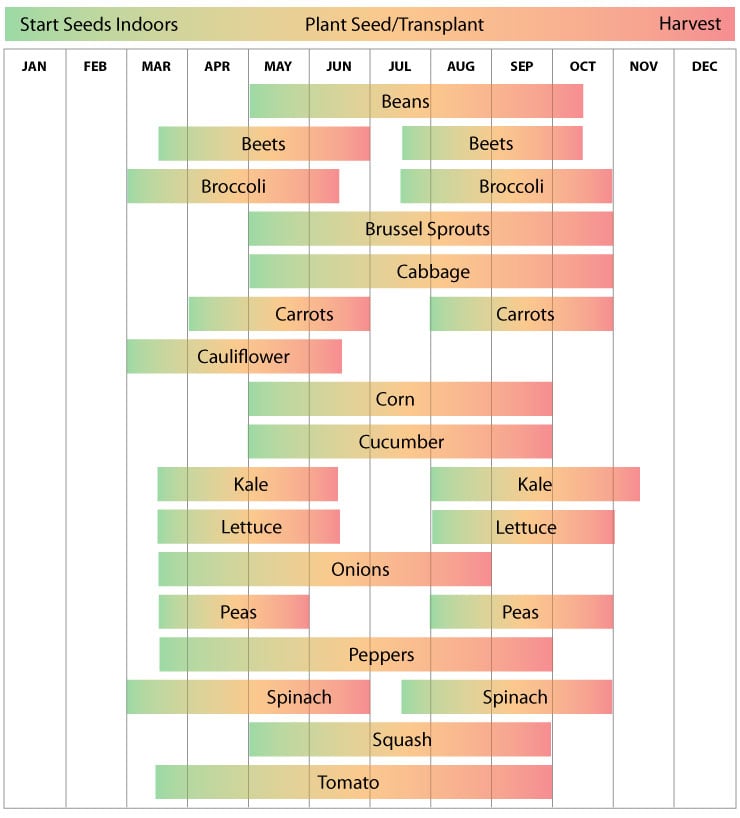Starting Seeds Indoors - A detailed article describing some indoor seed starting basics. The Farmer's Almanac has loads of great gardening resources, from when to start seedlings inside, to how to harden off seedlings when they're ready to be moved outside.
Chicago Botanic Garden's Sowing Seeds Indoors guide.
What materials do you need?
When should you start your seeds?
If you plan to transplant your seedlings outdoors, it's a good idea to start them at the correct time so that they are strong enough to be moved outside. This depends on the growing zone you are planting in. Oswego is in a hardiness zone 5b/6a. Not sure what a hardiness zone is? The USDA provides a brief description and map: https://planthardiness.ars.usda.gov/PHZMWeb/

Image source: https://www.ufseeds.com/new-york-vegetable-planting-calendar.html
How deep should you plant your seeds?
Seeds should be planted at a depth of two times the width, or diameter, of the seed. For example, if you have a seed that's about 1/16 inch thick, it should be planted about 1/8 inch deep.
Large bean seeds, which can be up to 1/2 inch wide, may need to be planted an inch deep.
| Name | Planting Depth | Spacing | Light Requirement (once germinated) | *Special Instructions |
|---|---|---|---|---|
| Onion | 1/4 - 1/2" | 3-4" | Full (6-8hrs) | Shallow rooted and appreciate damp soil |
| Leek/green onion | 1/4-1/2" | 1/4" | Full | |
| Pepper | 1/4 | 1 per cell | Full | Peppers germinate very slowly unless you place a heating mat under them |
| Corn | 1" | 6-7" | Full | |
| Swiss Chard | 1/2" | 4-6" | Partial | |
| Carrot | 1/4-1/2" | 3/4-1" | Partial |
| Name | Planting Depth | Spacing | Light Requirement (once germinated) | *Special Instructions |
|---|---|---|---|---|
| Basil | 1/4" | 1' | Full | |
| Sage | 1/4" | 2' | Full | Let the soil mostly dry out between waterings/doesn't like to stay damp once established |
| Marjoram | lightly cover with soil | 1' | Full | |
| Lavender | lightly cover with soil | 1' | Full | |
| Dill | 1/4 | 1' | Full | Doesn't like to be transplanted, plant in a container that can be buried/is biodegradable. |
Sources:
https://www.johnnyseeds.com/growers-library/vegetables/key-growing-information-vegetables-index.html